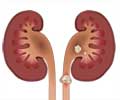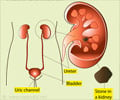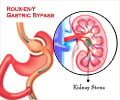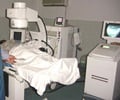- Kidney stone disease is associated with alterations in the human microbiome in multiple parts of the body
- The disintegration of the healthy and beneficial network of the microbiome can cause kidney stone formation
- A microbiome-friendly diet and limited antibiotic use should be considered as a part of treatment for kidney stone disease
Multi-site microbiota alteration is a hallmark of kidney stone formation
Go to source).
Mechanics Behind Kidney Stone Formation
The most prevalent cause of kidney stones isHow Modified Microbiome Network Cause Kidney Stone Disease?
The study team compared the gut, urine, and salivary microbiomes of 83 kidney stone patients with those of 30 healthy controls. Participants in the study comprised those who had developed kidney stones, had not been exposed to antibiotics within the previous 90 days, and were undergoing surgery to remove the stones.The types of bacteria found in the stomach and their genetic makeup, or mode of operation, were identified by a test technique known as shotgun metagenomic sequencing. Additionally, basic sequencing of the microbiome in the urine and oral samples was also conducted.
According to the findings, in healthy individuals, the microorganisms form a kind of network that is stable and beneficial; however, in kidney stone patients, this network is broken down. Not just in the stomach but also in the urinary tract and oral cavity, they fail to produce the same vitamins and beneficial metabolites.
In addition to having a gut microbiome that was more prone to dump toxins into the kidneys, kidney stone formers also had an unhealthy microbiome that made them more susceptible to antimicrobial agents.
The study team notes that while additional research is required, these preliminary results highlight the significance of maintaining a person's microbiome in good condition, with a diet that is friendly to the microbiome and minimal antibiotic use.
Reference:
- Multi-site microbiota alteration is a hallmark of kidney stone formation - (https://microbiomejournal.biomedcentral.com/articles/10.1186/s40168-023-01703-x)
Source-Medindia
















